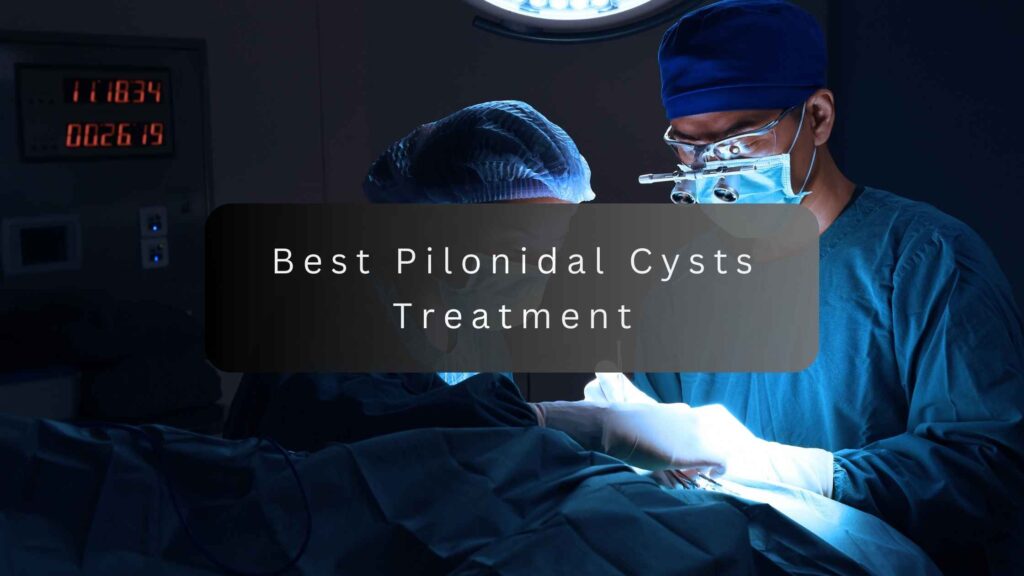Life alongside pilonidal cysts is not that simple especially during the time of taking care of them since they have the ability to cause the worst pain one could ever experience. There are many traditional ways to treat this condition but they mostly involve surgery, which takes time for recovery and can come with many risks of recurrence. However, improvements in clinical science have produced innovative processes that can transform the pilonidal drug panorama into cysts. If you are looking for the best pilonidal cysts treatment, it is essential to understand these new alternatives that provide less invasive techniques, faster recovery and a higher success fee.
Understanding pilonidal cysts
Pilonidal cysts, often found close to the tailbone and becoming painful abscesses from inflamed ingrown hairs, are fully understood before going into the new treatment modalities. Although the precise function of pilonidal cysts remains ambiguous, prolonged sitting, excessive perspiration as well as a genetic predisposition contribute in increasing their risk factors.
Traditional treatments: The old guard
Historically, remedy for pilonidal cysts has involved surgical excision, where the cyst is absolutely eliminated. This technique, whilst powerful, regularly requires a big healing length and includes the danger of infection and recurrence. Other conventional strategies encompass lancing, which includes draining the cyst, and phenol injections, which goal to chemically wreck the cyst.
While those strategies have been the cornerstone of pilonidal cyst remedies, they’re now not without drawbacks. Patients regularly enjoy ache, lengthy recovery times, and the concern of recurrence, which can lead to repeated surgical procedures.
Innovative non-surgical approaches
In recent years, there has been a good sized shift in the direction of less invasive remedies, which focus on minimizing recovery time and lowering the threat of recurrence.
Laser therapy
One of the most promising new treatments is laser therapy. This approach makes use of a concentrated beam of mild to put off the cyst and any infected tissue. The precision of laser remedy manners less harm to surrounding tissue, leading to quicker restoration times. Additionally, laser remedy can often be achieved on an outpatient foundation, lowering the want for hospitalization. This method is gaining recognition for being a remedy for pilonidal cyst that gives minimum scarring and a decreased recurrence charge.
Minimally invasive surgery
The next step forward in the treatment of a pilonidal cyst is minimally invasive surgery, such as the Gips technique or the Bascom cleft.The tactics used by this surgery involve making tiny wounds and using special instruments during cyst removal so that maximum amount of healthy cells remain untouched. Lesser lacerations lead to minimum postoperative glooms, swift recuperation periods and an almost no chances for the disease to come back (when compared with ordinary excision)
Fibrin glue
The use of Fibrin glue is an upcoming advantage technique. Injection of the fibrin glue in the vacant space is done by a physician after draining the cyst for quick healing and prevention of its recurrence. This approach is particularly appealing because it is much less invasive than surgery and has shown promising results in reducing recurrence charges.
Advances in post pilonidal cyst treatment care
Innovative pilonidal cyst care maintainers are also significant. Techniques that include negative tension wound therapy (NPWT) and quality wound dressings help patients recover faster with fewer complications. NPWT is an example of this as it uses a vacuum dressing to enhance wound healing via edema reduction and excess fluid removal. This method has been very beneficial among individuals who are undergoing modern day minimally invasive surgery because it reduces contamination chances and hastens recovery processes.
Integrating lifestyle changes
In addition to these medical innovations, there is growing recognition of the role that lifestyle modification can play in preventing pilonidal cysts and improving outcomes after repair. Maintaining proper hygiene, limiting prolonged sitting, and keeping the area easy and dry are all key steps in preventing recurrence. For patients who are prone to pilonidal cysts, these proactive measures can complement clinical management and help maintain long-term health.
The importance of early intervention
One of the critical parts of what was recently learned about how to treat pilonidal cysts is that acting early is very important. The quicker you treat a pilonidal cyst, the better the result can be. Early treatment, which is not the most skilled, prevents headaches such as abscess formation, but also allows for the use of much less invasive methods, which are associated with faster recovery and fewer long-term problems.
We are looking for the best treatment for you
When it comes to choosing top-notch therapy for a pilonidal cyst, several considerations have to be put into place like how severe the cyst is, one’s overall health and personal preference. It is advisable that you look for advice from a physician who understands modern approaches in treating this condition and can lead you through the process. They allow you to weigh the blessings and risks of each method and ensure that you get the easiest and least invasive treatment.
In conclusion
In the past, treatment pilonidal cysts regularly meant a choice between invasive surgical treatment and the risk of recurrence. However, thanks to modern treatments including laser treatment, minimally invasive surgical treatment and fibrin glue, sufferers now have the right to access more powerful and much less painful alternatives. These new strategies are not the most effective, they improve the results, but also reduce the number of cases of recovery and the likelihood of cysts returning.
If you are treating a pilonidal cyst, learning about these improvements can help you make an informed choice about your medication. Early intervention and correct correction techniques are the keys to overcoming this situation and returning to a pain-free life. Always see a healthcare professional to determine the best course of action based primarily on your specific scenario.



